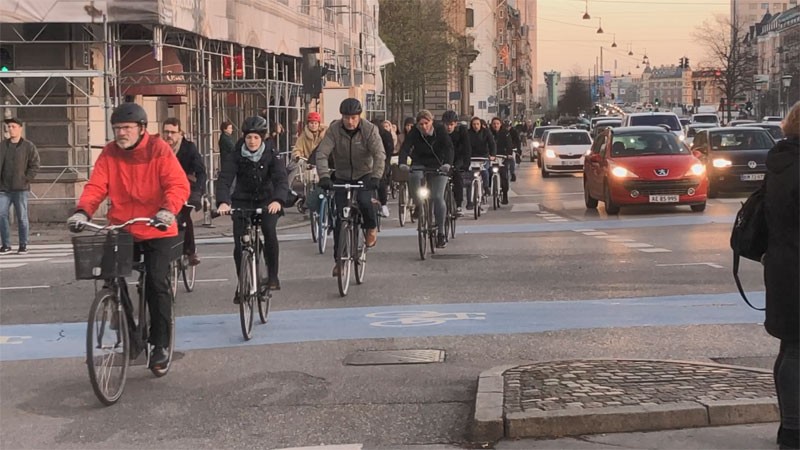Copenhagen, often dubbed the “City of Cyclists,” enjoys a global reputation for its cycling infrastructure. But how does it truly stack up against other cycling havens, specifically Utrecht in the Netherlands? This article delves into a comparative analysis of the two cities’ bike infrastructure, examining key aspects such as modal share, infrastructure design, and overall cycling experience.
Modal Share: A Tale of Two Cities
While Copenhagen boasts impressive cycling numbers, a closer look at modal share reveals a nuanced picture. Comparing data on cycling to work (and education in Copenhagen’s case) from 2017, Utrecht and Amsterdam surpass Copenhagen in terms of cycling’s proportion of overall commutes. This suggests that while cycling is prevalent in Copenhagen, it’s even more deeply ingrained in the daily fabric of Dutch cities like Utrecht.
Infrastructure Design: Diverging Philosophies
Both cities share a history of transitioning from car-centric planning to prioritizing cycling. However, their approaches to infrastructure design differ significantly. Copenhagen’s infrastructure often features cycle tracks directly adjacent to motor traffic with minimal separation. This contrasts sharply with Utrecht’s emphasis on protected intersections, separated bike paths, and extensive use of traffic calming measures like buffers and traffic islands.
Copenhagen’s intersection design also presents challenges for cyclists. The city’s preference for set-back stop lines or head starts for cyclists at intersections, while intended to improve safety, can feel less intuitive and potentially dangerous compared to Utrecht’s protected intersections, which prioritize cyclist visibility and minimize conflict points. Furthermore, Copenhagen’s reliance on static traffic light systems, as opposed to Utrecht’s dynamic, fully actuated systems, results in a less responsive and efficient traffic flow for cyclists.
Cycle Streets and Parking: Learning from Utrecht
Copenhagen acknowledges Utrecht’s leadership in certain aspects of cycling infrastructure. The city recognizes the need to improve bicycle parking facilities, citing Utrecht’s vast indoor bicycle parking at train stations as a model. Copenhagen is also drawing inspiration from Dutch and German cities in its development of cycle streets, aiming to create more cyclist-friendly environments in areas where separated infrastructure is challenging to implement.
The Cycling Experience: Convenience vs. Challenge
While Copenhagen offers a noticeable cycling culture, certain design choices create a less convenient and comfortable experience compared to Utrecht. The lack of dropped kerbs, the presence of asphalt “blobs” for kerb transitions, and inaccurate bicycle counters are just a few examples of seemingly minor details that impact the overall cycling experience.
Conclusion: Utrecht Sets a Higher Standard
While Copenhagen deserves recognition for its cycling efforts, a direct comparison with Utrecht reveals areas where the Danish capital falls short. Utrecht’s more comprehensive and cyclist-centric approach to infrastructure design, particularly regarding intersection treatments, separated bike paths, and bicycle parking, results in a safer, more convenient, and ultimately more enjoyable cycling experience. Copenhagen can learn valuable lessons from Utrecht’s best practices to further enhance its cycling infrastructure and solidify its position as a true cycling capital.
